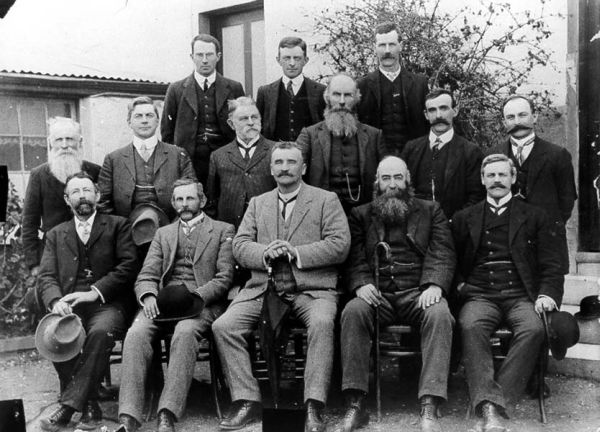 |
 |
|
Local Government
Local Government in Tasmania today consists of 23 councils and 6 city councils. The Hobart Board of Commissioners was established in 1846. With the granting of self-government to the colony in 1856, more local government structures were set up. A Launceston Council was established in 1853 and 19 rural municipalities were proclaimed by 1866. In 1865, 11 municipal districts were also established, a total of 32 municipal bodies. There were also road trusts, and from the 1880s some town boards. The Local Government Act (1906) introduced a new system, consisting of the cities of Hobart and Launceston and 48 municipalities. Subsequent rationalisations throughout the twentieth century reduced the complement of councils to the current number, and from 1964 the municipalities of Glenorchy, Devonport, Burnie and Clarence became cities. Local government was initially concerned with property services, with the franchise based on land ownership. Rates, determined by property values, were the principal form of revenue. They were seen as a way of easing the burden on the colonial Treasury. Council responsibilities varied over the years, including at times police, ambulance, emergency hospitals, wartime evacuation of inhabitants, and some responsibilities for schools. Councils have also represented their constituents' interests to the state government, at times vociferously. During the latter half of the twentieth century, the role of local government began to diversify as councils became involved in a broader range of human services. In the early days, a small rural council would probably employ a council clerk who was also building inspector, sanitary inspector and so on, and a gang for road works. Today, a general manager leads a staff of professionals who assist the elected body in policy development and implementation. As well as providing for health services, building services and road works, today's councils deal with a range of issues, including community, environmental, engineering, multi-cultural, aged and youth services, economic development and information technology. In keeping with this development, the property-based franchise has been replaced by universal adult suffrage, although a roll of non-resident property owners is also maintained. Local government's constitutional basis, and all its powers, are derived from state legislation. The Local Government Act (1906) was very prescriptive and imparted precise powers to councils. Any action not prescribed by legislation was ultra-vires and could not be performed by councils. In 1962, the 1906 Act was replaced by a new Act, but the philosophy did not change. Councils still had to seek approval from the governor or the minister to perform many of their basic functions.The Local Government Act (1993) is radically different, based on a general competence power. If it does not specifically prohibit a particular action, a council is free to perform it. This Act was designed to give councils more freedom and autonomy to function in a continually evolving environment. In the past, councils were answerable to the state government. They now answer to their electors. In consultation with their constituents, councils prepare strategic and operational plans and measure their progress with an annual report and an annual general meeting. A new working relationship between state and local government has recently developed in Tasmania. Councils play an important role in the community's social and economic development, and this relationship helps to maximise this development. This relationship is embodied in the Partnership Agreement Programme between the state government and councils. The main vehicle for developing statewide Agreements is the Premier's Local Government Council, comprising the premier, as chair, and nine elected local government representatives drawn primarily from the Local Government Association of Tasmania – the peak body for local government in Tasmania. The past thirty years have also seen a developing relationship between local government and the federal government, with continuation of the Whitlam government's process of providing funding to local councils. Relations between the three spheres of government continue to evolve and local government has emerged as an important third sphere in the governance structures of the nation. Some say local government has outgrown its 'creature of State legislation' status and argue for local government to be recognised in the federal and state constitutions, but a 1988 referendum proposal for recognition of local government in the federal constitution did not succeed. However, many in local government continue to work towards recognition in both constitutions. In 2003 state and local government worked together to review comprehensively the Local Government Act (1993) to ensure that it continues to equip councils to meet the needs of their local communities and manage their own affairs in a climate of constant change. Community input into the review has been encouraged through representation on working groups, a steering committee, public workshops and invitations to the community to make written submissions. Further reading: J Power et al, Local government systems of Australia, Canberra, 1981. Marguerite Scott |
Copyright 2006, Centre for Tasmanian Historical Studies |
